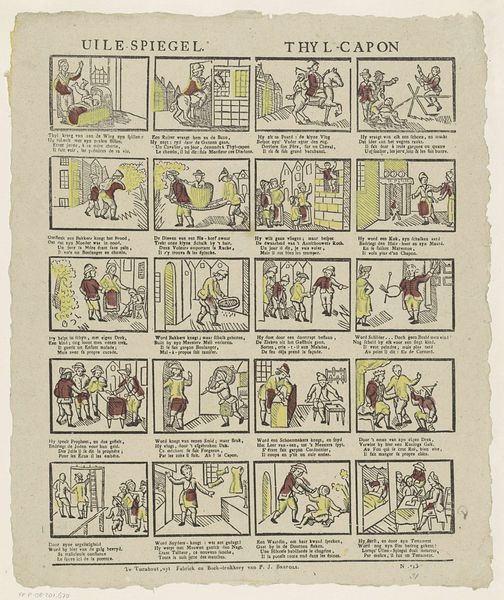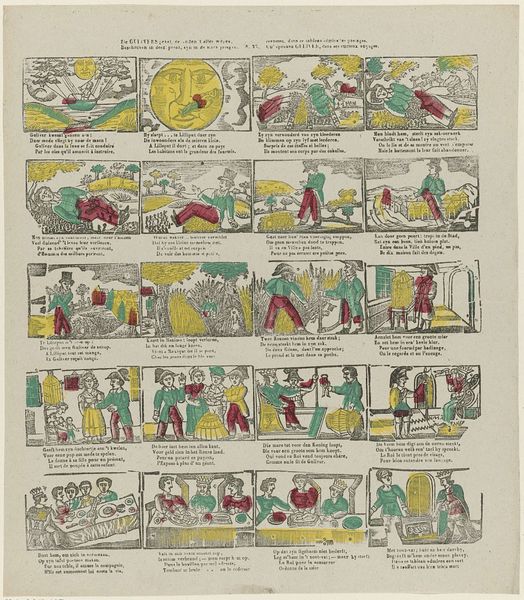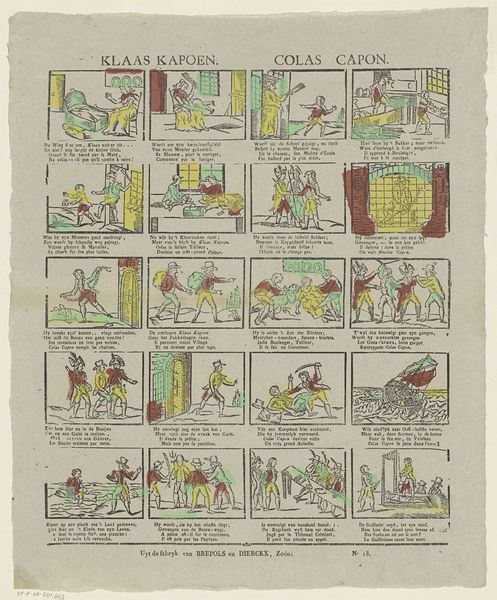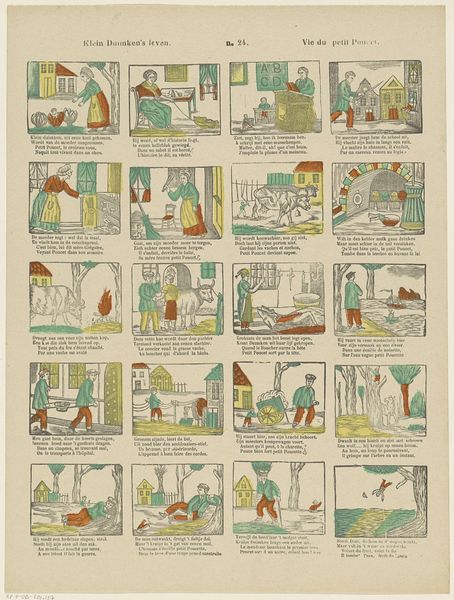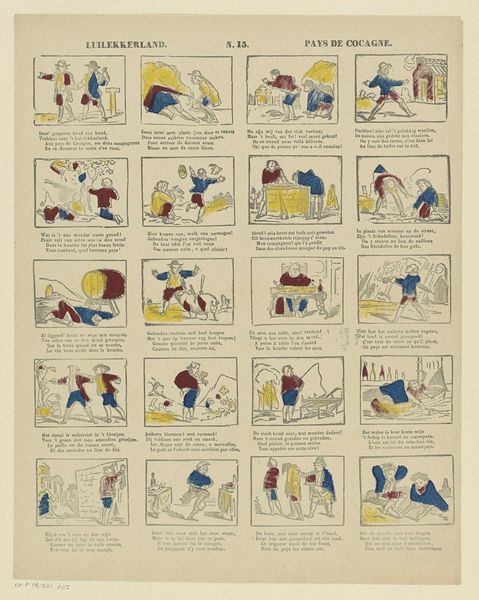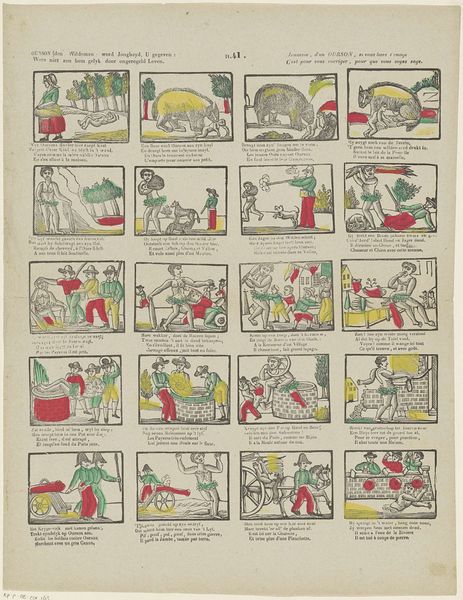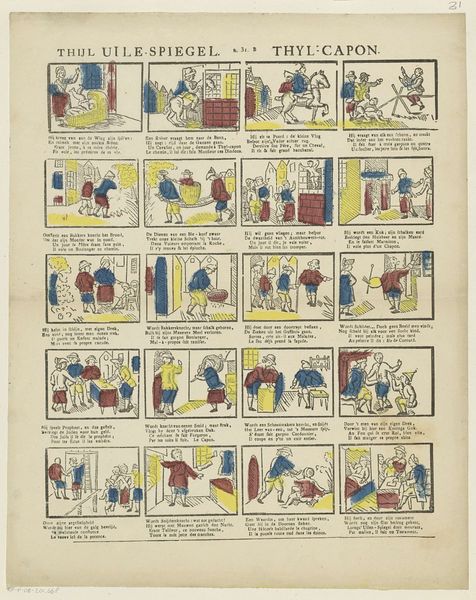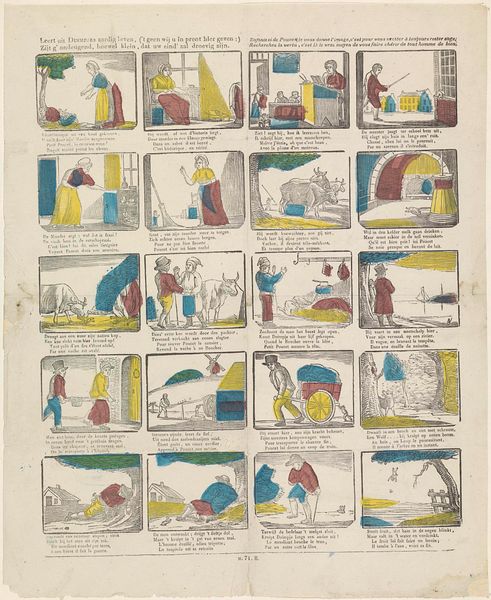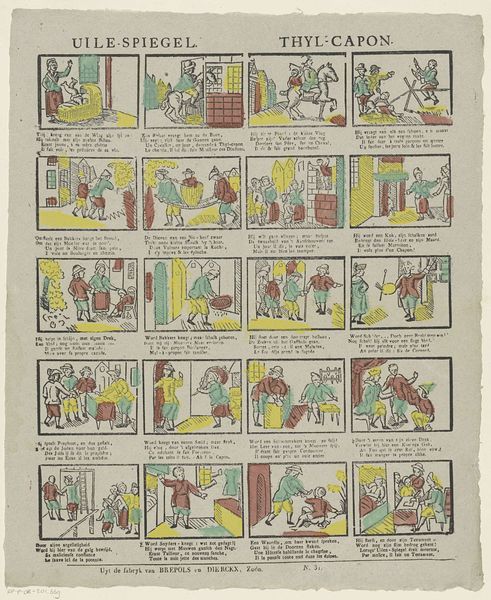
Ourson, den wildeman, word jongheyd, u gegeven: / Wees niet aen hem gelyk door ongeregeld leven / Jeunesse, d'un Ourson, si vous lisez l'image / C'est pour vous corriger, pour que vous soyez sage 1833 - 1856
0:00
0:00
graphic-art, print, engraving
#
graphic-art
#
comic strip sketch
#
narrative-art
# print
#
folk-art
#
romanticism
#
comic
#
genre-painting
#
engraving
Dimensions: height 417 mm, width 335 mm
Copyright: Rijks Museum: Open Domain
Curator: Well, here's something a little different! What we have before us is a print titled "Ourson, den wildeman, word jongheyd, u gegeven: / Wees niet aen hem gelyk door ongeregeld leven / Jeunesse, d'un Ourson, si vous lisez l'image / C'est pour vous corriger, pour que vous soyez sage," made sometime between 1833 and 1856 by the firm of Glenisson & Van Genechten. Editor: Whoa. It looks like an early comic strip... or maybe storyboards for a particularly strange play? My immediate reaction is a feeling of childlike unease—the colors are off, and the narrative...disjointed? Curator: Exactly! Each little frame, etched in the engraving, attempts to impart a moral lesson through the adventures – if you can call them that – of Ourson, or the Bear-Cub. Look at the crude but expressive linework, the stark, flat colours, predominantly green, yellow and red, constrained within their outlines like naughty children. It’s almost folk art in its raw simplicity, pushing toward romanticism with the story’s heavy moral undertones. Editor: You can tell this isn't really concerned with reality; the composition is quite odd! Notice the human figures, presented often as rather simplistic silhouettes or caricatures, stand in stark contrast to Ourson, whose representation morphs considerably throughout. Does that fluidity carry symbolic weight, or simply reflect the rudimentary artistic skill of the makers? The title hints strongly that it should guide "youth". Curator: Both! I imagine it as almost a precursor to the graphic novel. These "images populaires", these printed narratives were incredibly widespread; little pamphlets, meant to be pinned up in a child’s room, reminding them to stay on the straight and narrow. Notice the integration of text within the panels. These stories aren't merely visual; they speak! The intention clearly isn't to mimic visual reality but to deliver clear moralistic signals—avoid this path and that—or you’ll wind up in trouble like young Ourson here. Editor: It's the blend of earnestness and strangeness that grips me, I think. Like an old cautionary tale told by a slightly unhinged, very well-meaning relative. I can almost hear the didactic drone behind those vibrant, bizarre little boxes. Curator: Yes, its directness gives the work a unique charm and it serves as a snapshot into the cultural landscape of the time. I wonder how many naughty children these little squares kept in line?
Comments
No comments
Be the first to comment and join the conversation on the ultimate creative platform.

